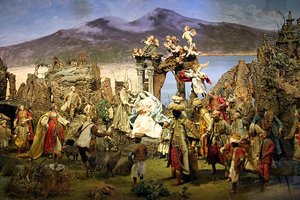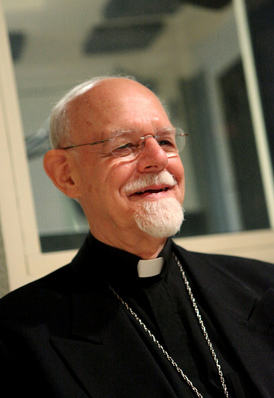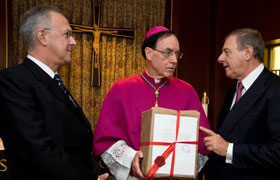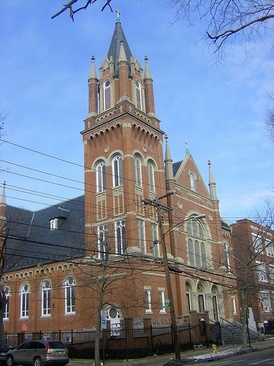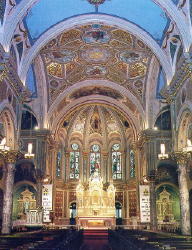If the crèche at
the Abbey of
Regina Laudis strikes you as a little out place, there’s a good
reason. The austere Yankee barn that houses it is a world away from its previous
home. Handcrafted by artisans in Naples, the intricate nativity scene was
presented as a coronation gift to Victor Amadeus II, king of Sardina, in 1720.
It remained among Italian nobility until it was purchased by Loretta Hines
Howard, an artist and collector, in 1949. She immediately donated it to what
was then a fledgling Benedictine Abbey in, fittingly, Bethlehem, Connecticut
(although the nuns insist the name is a coincidence).
The crèche takes a few
liberties with the traditional nativity story. Instead of a Judean village,
Bethlehem appears here somewhere on the coast of Italy. The stable has been
replaced by Corinthian columns, and the traditional kings and shepherds are
joined by a whole host of other characters, who have shed their New Testament
robes for 18th-century knickers and coats. In one corner, some
peasants argue over the contents of a stem pot. In another, a noblewoman walks
her whippet on a leash. The crowd is puzzling at first, though it may
serve a distinct purpose. “For as
many people as there are, there are attitudes toward the birth of Christ,” says
Sister Angèle Arbib, who helps care for the crèche. She points out some figures
who seems reverential, others who seem distracted or dis-believing: “It’s so
representative. When people come here to see the crèche, they identify with
someone in here.”
And people of all faiths do come to see it. The mass of
Christmas pilgrims has returned after a recent restoration had taken the crèche
out of public view for three years. Conservators from New York’s Metropolitan
Museum of Art painstakingly repaired each of the 68 figures and the tiny
hand-sewn outfits they wear. The results are stunning. The crèche now stands as
a testament to the continued support of the community of nuns,
preservationists, and believers that has formed around it. It’s fitting. After
all, what is a nativity other than a story of people coming together?
Shatwell
November/December, Vol. 74, No. 6.
Abbey of Regina Laudis
273 Flanders Road
Bethlehem, CT
The crèche is open to the public daily 10-4 through Jan. 5 (closed Jan. 6-Apr. 24)
203.266.7727
